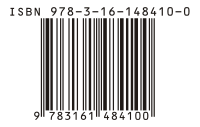ISBN
**1. ISBN Overview and History:**
– The SBN system transitioned to the 10-digit ISBN format in 1970.
– Each edition of a publication requires a unique ISBN.
– The ISBN structure consists of a 13-digit code since January 2007.
– The International ISBN Agency manages global ISBN registration.
– The US had over 3.9 million registered ISBNs in 2020.
**2. ISBN Issuing Process and Structure:**
– ISBNs are country-specific and issued by national agencies.
– Registration groups are primarily allocated within the 978 prefix element.
– ISBNs consist of prefix, registration group, registrant, publication, and check digit.
– The structure of ISBNs is detailed in the International ISBN Agency’s manual.
– ISBNs are obtained by publishers from the respective national agencies.
**3. ISBN Check Digits and Calculations:**
– ISBN-10 check digit ranges from 0 to 10.
– ISBN-10 check digit calculation ensures a multiple of 11.
– ISBN-13 check digit method differs from ISBN-10.
– ISBN-13 check digit calculation involves multiplying digits by 1 or 3.
– The check digit calculation method is the same for both ISBN-13 and EAN-13.
**4. ISBN Database and Conversion:**
– The Global Register of Publishers contains ISBN details.
– ISBN-10 to ISBN-13 conversion involves adding 978 at the beginning.
– The conversion process ensures compatibility with the ISBN-13 system.
– The ISBN database is freely searchable online.
– Different publishers may have varying registrant elements.
**5. ISBN Usage, eISBN, and Global Impact:**
– Publishers and libraries have varying policies on ISBN correspondence.
– An ISBN is required for listing a book on Amazon.
– Each digital format of a book must have a unique ISBN.
– ISBN plays a crucial role in the global publishing industry.
– ISBNs contribute to the accessibility and dissemination of knowledge.
The International Standard Book Number (ISBN) is a numeric commercial book identifier that is intended to be unique. Publishers purchase or receive ISBNs from an affiliate of the International ISBN Agency.
 A 13-digit ISBN, 978-3-16-148410-0, as represented by an EAN-13 bar code | |
| Acronym | ISBN |
|---|---|
| Organisation | International ISBN Agency |
| Introduced | 1970 |
| No. of digits | 13 (formerly 10) |
| Check digit | Weighted sum |
| Example | 978-3-16-148410-0 |
| Website | isbn-international |
An ISBN is assigned to each separate edition and variation (except reprintings) of a publication. For example, an e-book, a paperback and a hardcover edition of the same book must each have a different ISBN. The ISBN is ten digits long if assigned before 2007, and thirteen digits long if assigned on or after 1 January 2007. The method of assigning an ISBN is nation-specific and varies between countries, often depending on how large the publishing industry is within a country.
The initial ISBN identification format was devised in 1967, based upon the 9-digit Standard Book Numbering (SBN) created in 1966. The 10-digit ISBN format was developed by the International Organization for Standardization (ISO) and was published in 1970 as international standard ISO 2108 (the 9-digit SBN code can be converted to a 10-digit ISBN by prefixing it with a zero).
Privately published books sometimes appear without an ISBN. The International ISBN Agency sometimes assigns such books ISBNs on its own initiative.
Another identifier, the International Standard Serial Number (ISSN), identifies periodical publications such as magazines and newspapers. The International Standard Music Number (ISMN) covers musical scores.
